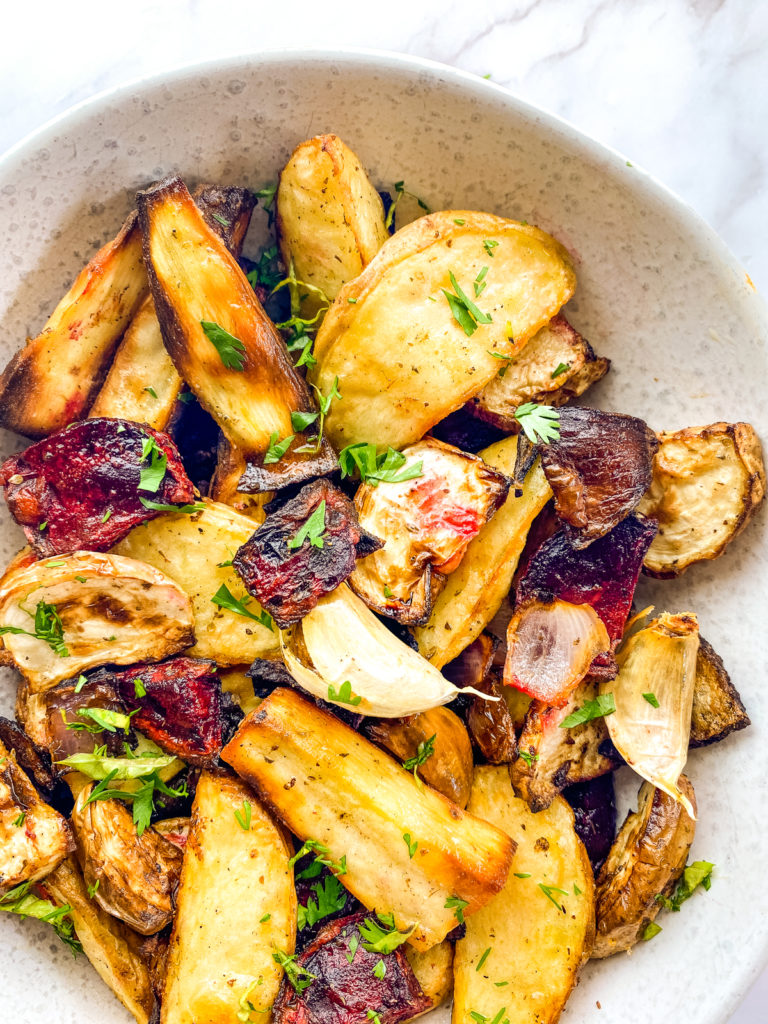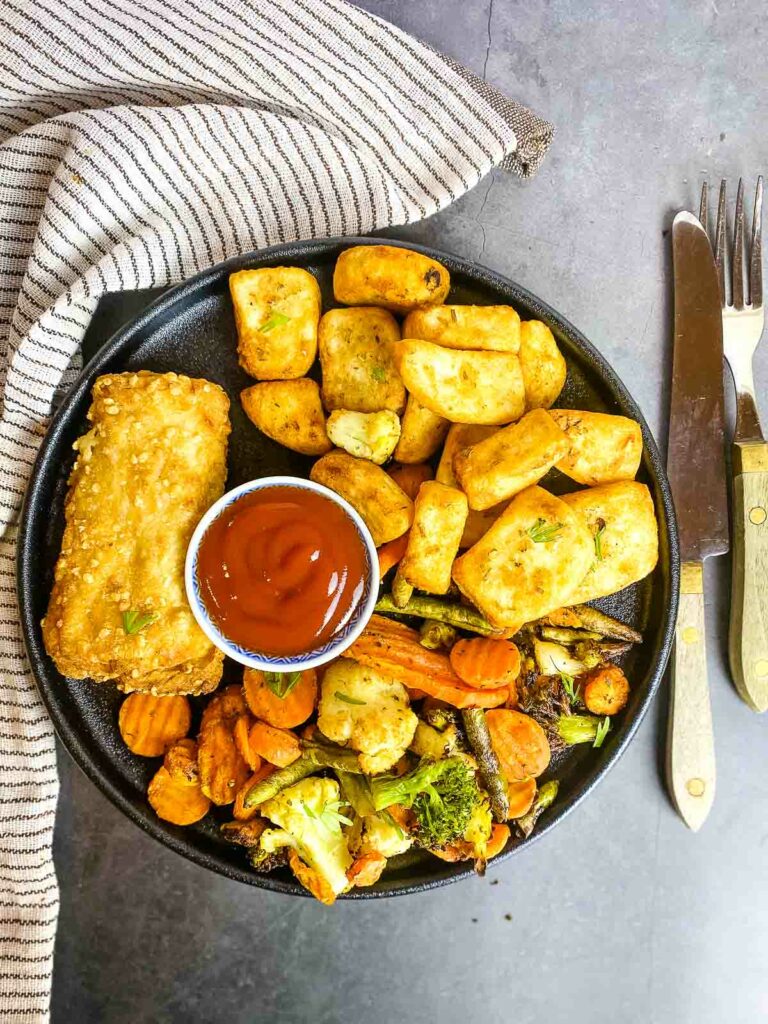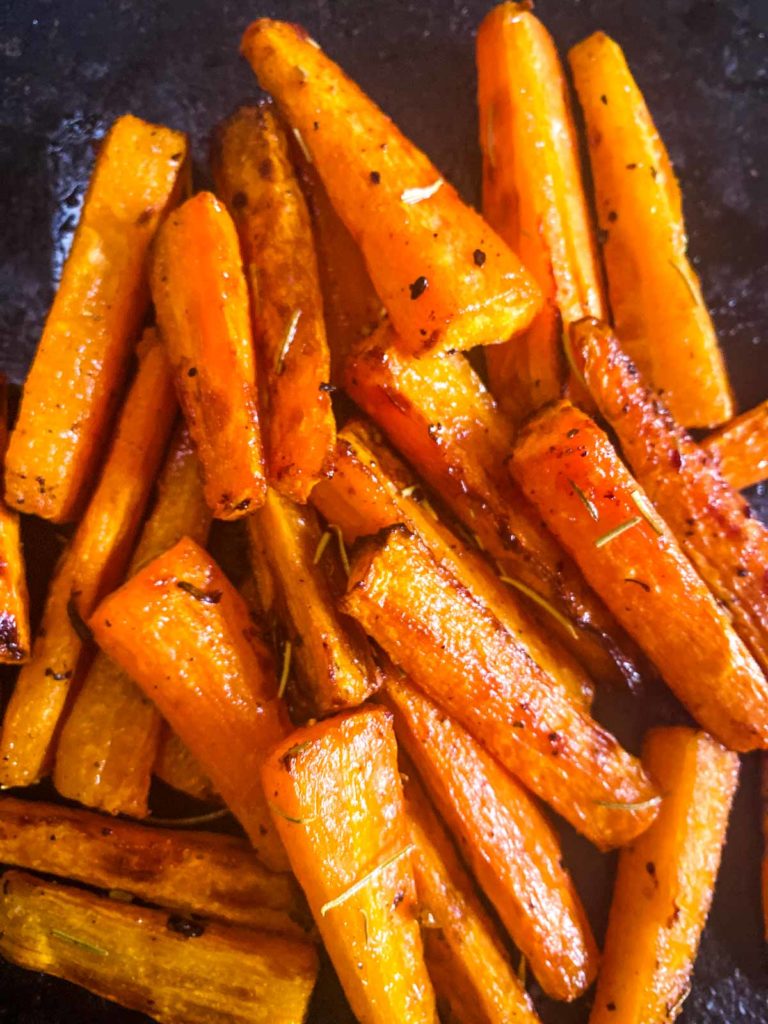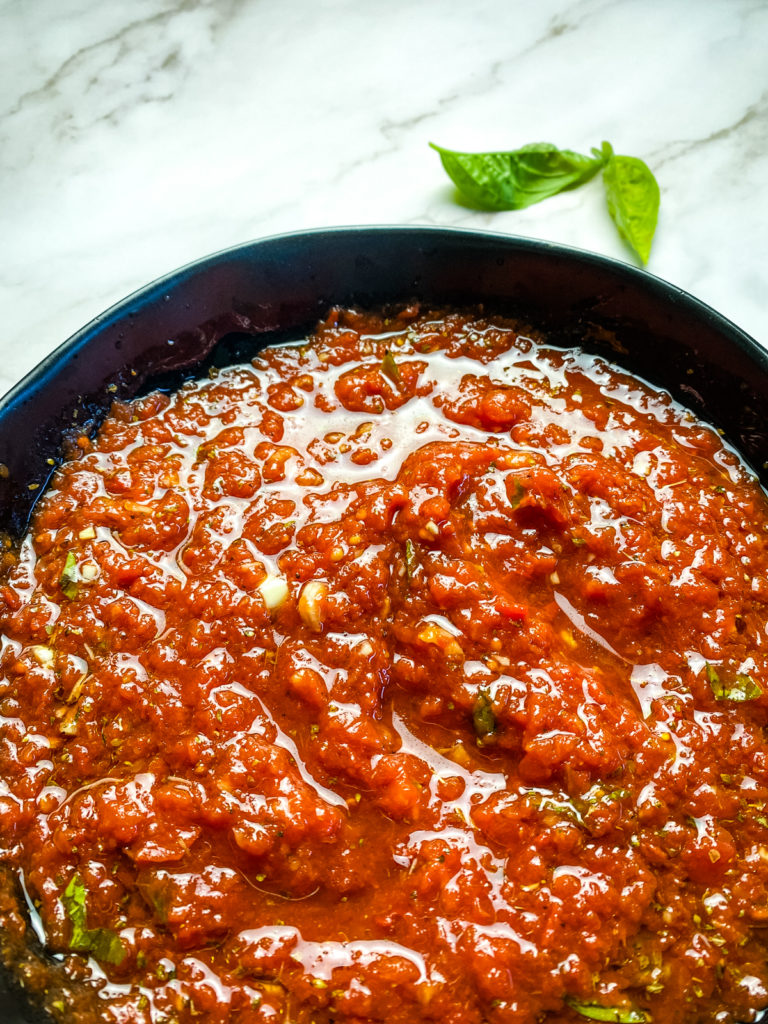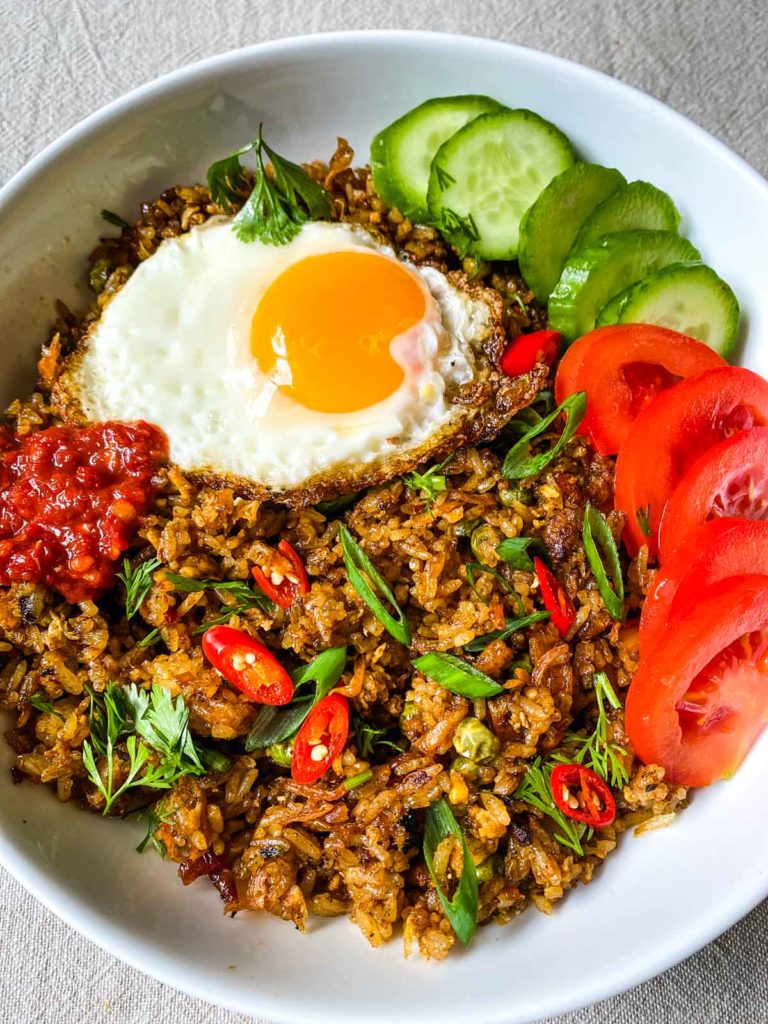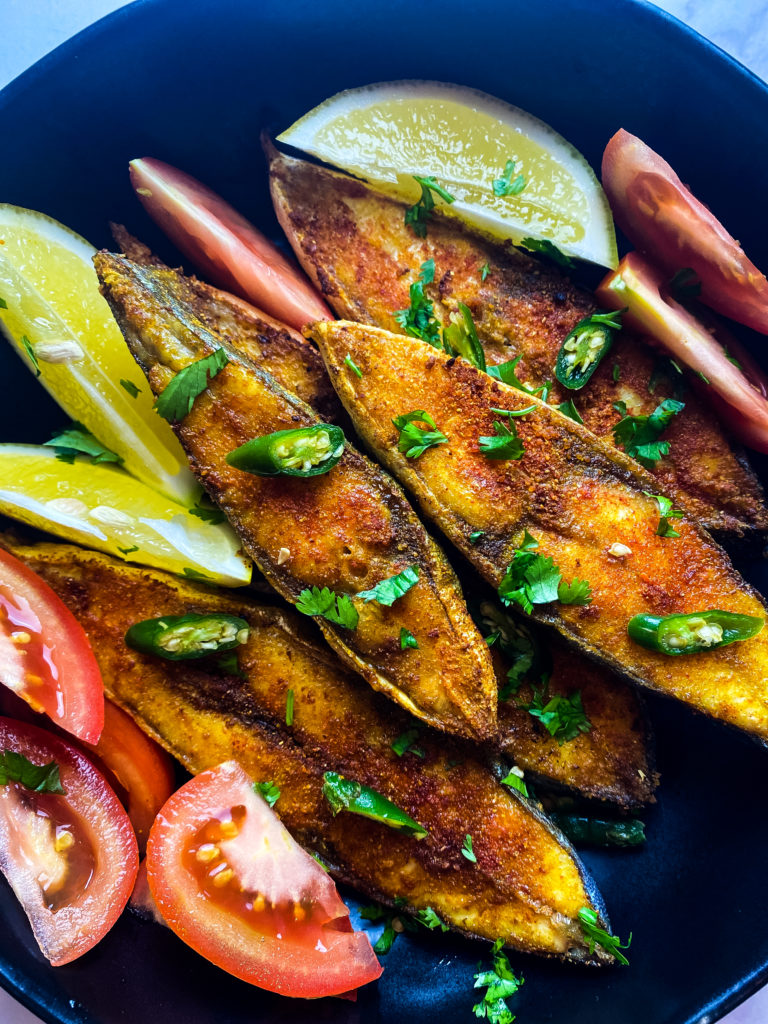Learn how to blanch broccoli for freezing and to use it for stir-fries, casseroles, sides, and even fried rice. Toss broccoli in butter for a low-carb filling snack, or freeze them for later use. Once blanched, broccoli stays crisp and vibrant for much longer. Lunch box friendly, gluten-free, vegetarian, and a crunchy low-carb snack!
For more delicious vegetarian snacks and meals, click here.

With the prices of vegetables and all groceries, in general, going up, it just makes sense to buy seasonal produce in bulk when they are cheaper. Storing them as washed, crisp, and ready-to-use florets make it easier when you want to create meals in a hurry. Just pop out the measured portions from your freezer, and use them as required. Blanching and freezing save you time and money!
One of the important lessons taught to us in culinary schools and food technology was the importance of retaining the color, texture, and flavor of foods. This recipe not only shows you how to preserve the texture and crunch of this wonderful vegetable but also minimizes wastage by using whole vegetables – stalks and all.
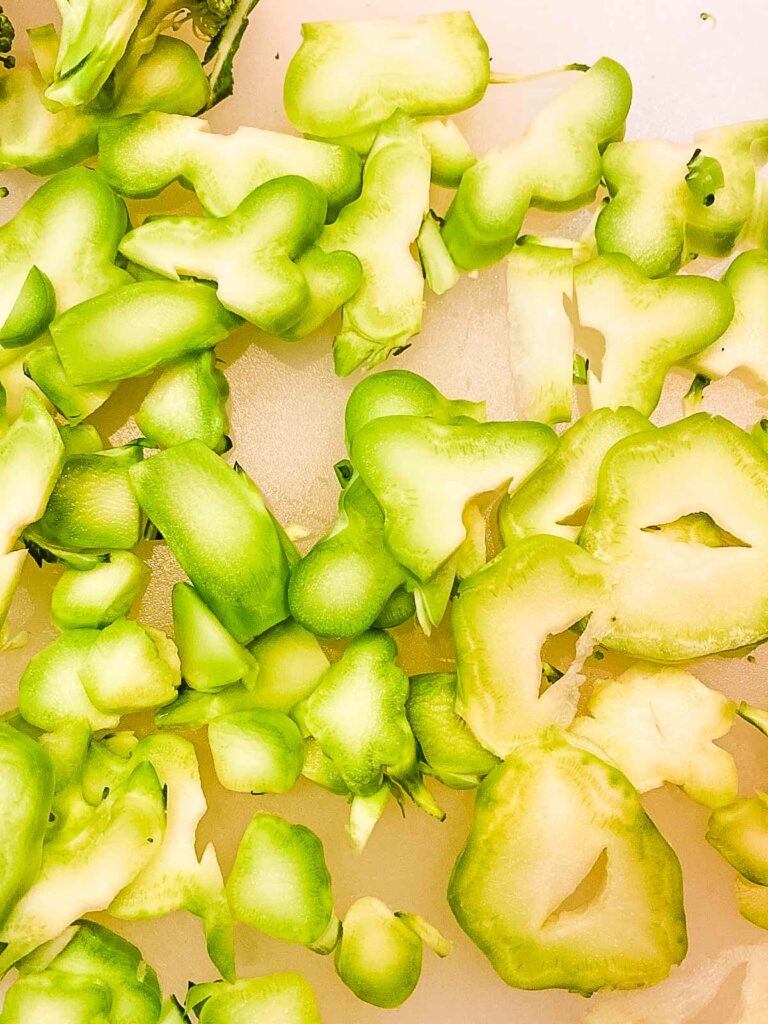
Broccoli And Cruciferous Vegetables
Broccoli belongs to the cruciferous vegetable group which also includes cauliflower, brussels sprouts, cabbage, kale, bok choy, collard greens, mustard greens, arugula (rocket leaves), and radishes. These vegetables are known for their high nutritional content, including fiber, vitamins, minerals, and antioxidants. They are also associated with various health benefits, including reducing the risk of certain cancers and promoting digestive health. Being low in starch, they are also fantastic for people with low carbohydrate / ketogenic ways of eating.
So these are great reasons to always have portions of ready crunchy, broccoli ready to use in your weekly cooking.
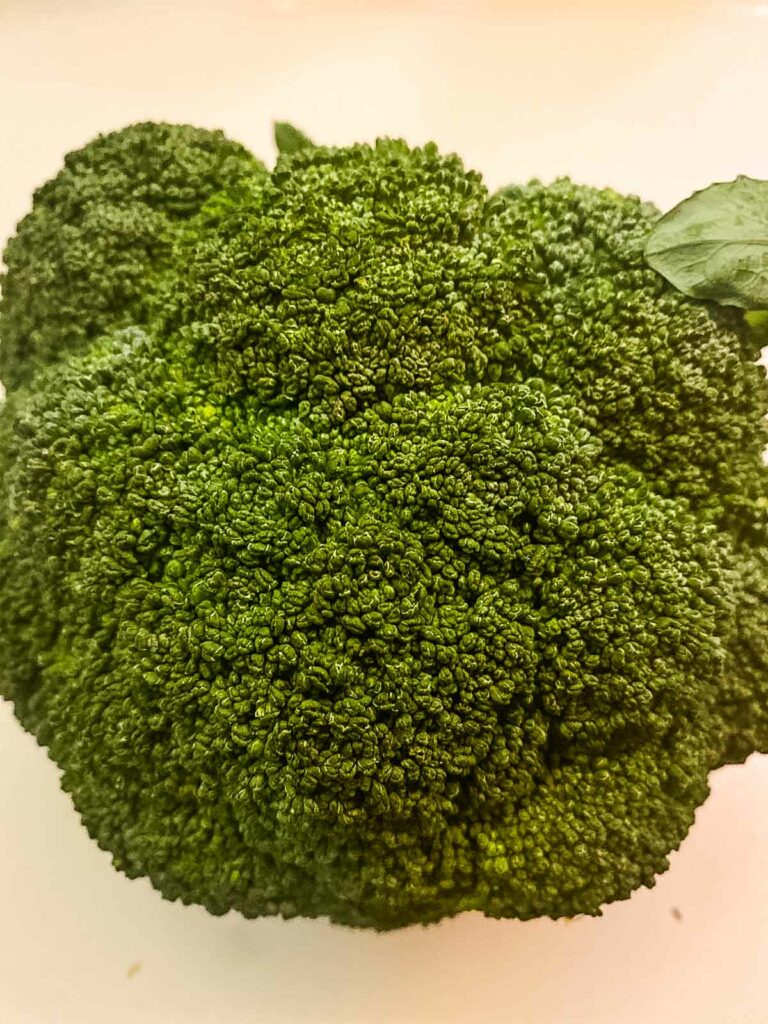
Benefits Of Blanching Broccoli Before Freezing
Preservation: Blanching helps to preserve the color, flavor, and nutrients of vegetables.
Texture: Blanching can help to soften vegetables, making them easier to chop or puree.
Kill Bacteria: Blanching can also help to kill bacteria, yeast, and other microorganisms, extending the shelf life of vegetables.
Remove Bitterness: Blanching can also help to remove bitterness from some vegetables, making them more palatable.
Stop Enzymatic browning: Blanching stops the action of enzymes, which cause browning and eventual wilting of vegetables, which makes them unappetizing to eat. That is just money down the drain!
Improve Freezing: Blanching helps to preserve the quality of frozen vegetables by slowing down the rate at which enzymes and microorganisms can break down the food.
One of the lessons drilled into me in culinary school was the importance of retaining the texture, color, and flavor of foods. We do eat with all our senses after all!
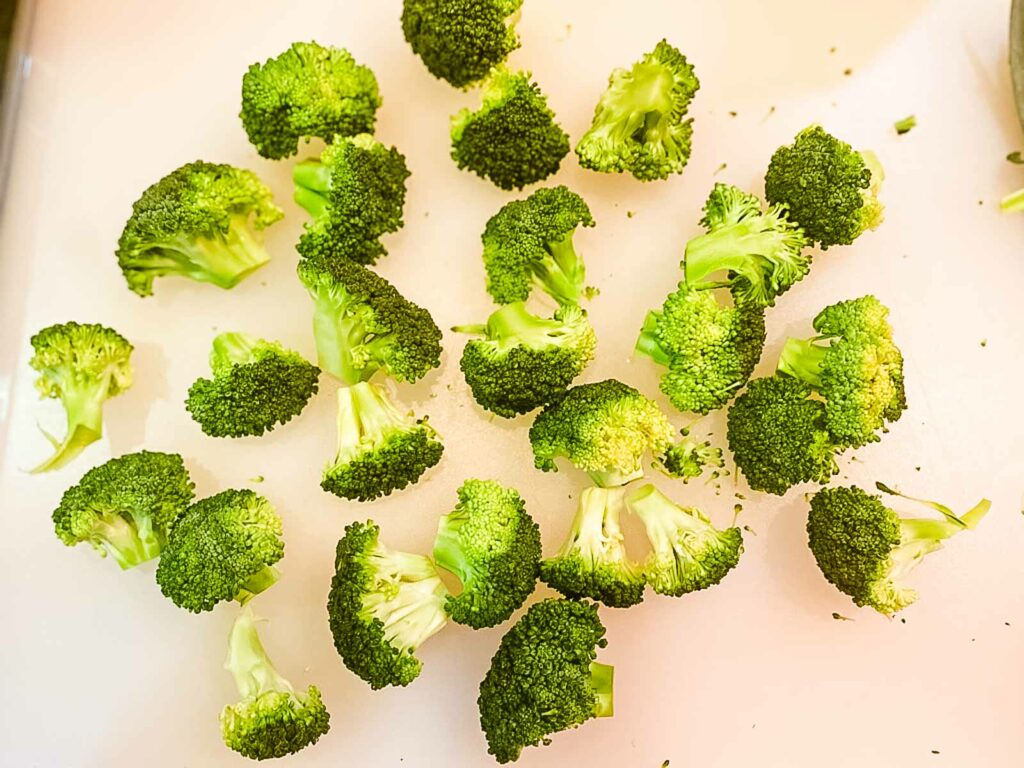
What Is Blanching?
Blanching is a food prep technique that immerses food in hot water or oil for a short time and then cools it to prevent further cooking.
Oil Blanching: eg. Twice Fried Fries – Potato fries are cooked in oil at a low temperature, drained, and kept aside. Before serving, they are deep-fried a second time at a higher temperature. This gives you perfectly crispy fries.
Water Blanching: Vegetables, like broccoli, are processed by immersing them in boiling hot water for a few minutes and immersing them in ice-cold water. This thermal shock is how they keep their vibrant bright green color and crunchy texture.
Is It Necessary To Blanch Broccoli Before Freezing?
If you have opened your vegetable crisper drawer and spotted any limp or browned vegetables, you have seen their enzymes in action. Enzymes in vegetables and fruits cause oxidation over time, which results not only in browning but also in a limp texture and lost flavors. I feel guilty over lost produce that will eventually end up in the bin.
Blanching is a great way to stop those enzymes from deteriorating your vegetables, and extend their life, texture, and appearance.
Since the prices of fresh vegetables can vary a lot, I like to buy them in bulk when cheaper and in season, and prep and freeze them to use later. Once correctly prepared, and frozen, you can store your vegetables in the freezer for 8 to 10 months!
How To Blanch Broccoli For Freezing?
Here are the steps to blanch and freeze broccoli:

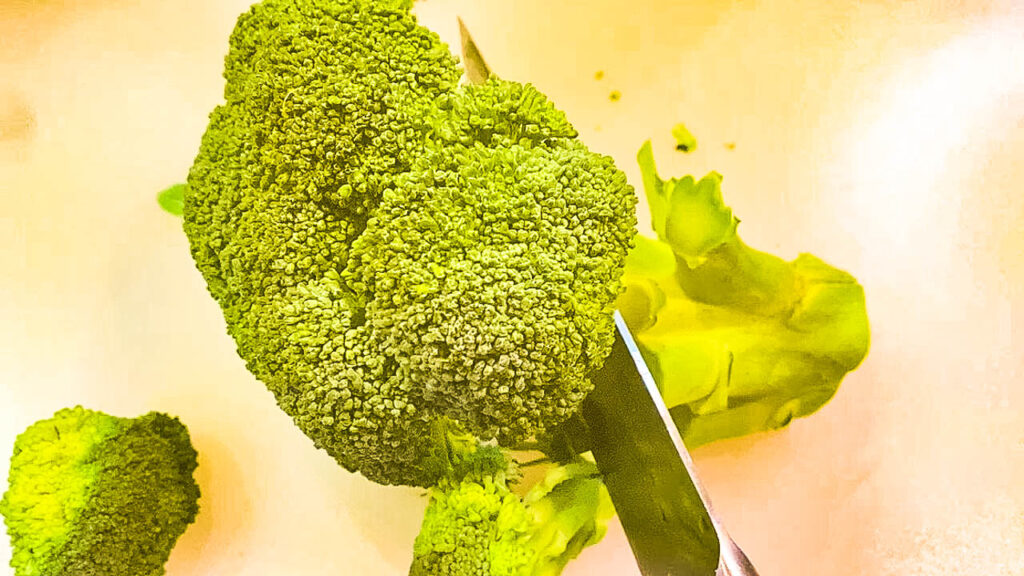
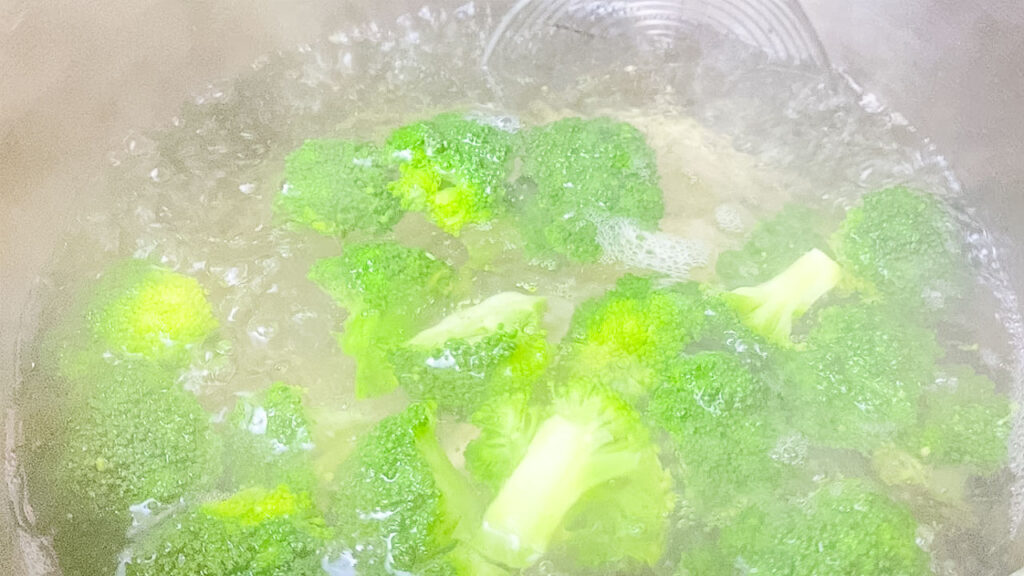

- Prepare an ice bath, by adding ice cubed to water in a larger pot.
- With a knife, carefully chop the broccoli into small florets. Once you are left with just the stalk, slice the stalk into thin discs.
- Wash the florets and stalk slices under running water.
- Fill a large pot with water and bring it to a boil. As a rule, use four times the water as the vegetables. eg. 1 cup of vegetables will need 4 cups of water. If 1 pound of vegetables is roughly 4 cups, you will need 16 cups or 1 gallon of water.
- Add the broccoli florets to the boiling water. This will being down the temperature of the water, and it may stop boiling. Wait till it starts boiling again and start the timer for 3 minutes. If you want your broccoli extra crunchy, you can also boil them for just 2 minutes.
- Remove the broccoli from the boiling water using a slotted spoon and immediately place it in a bowl of iced water to stop the cooking process. Instead of a slotted spoon, you can also drain the hot water in a colander.
- Keep the broccoli in ice water for about 3 minutes, and gently stir them around so they cool evenly and quickly. We want to avoid fully cooked broccoli.
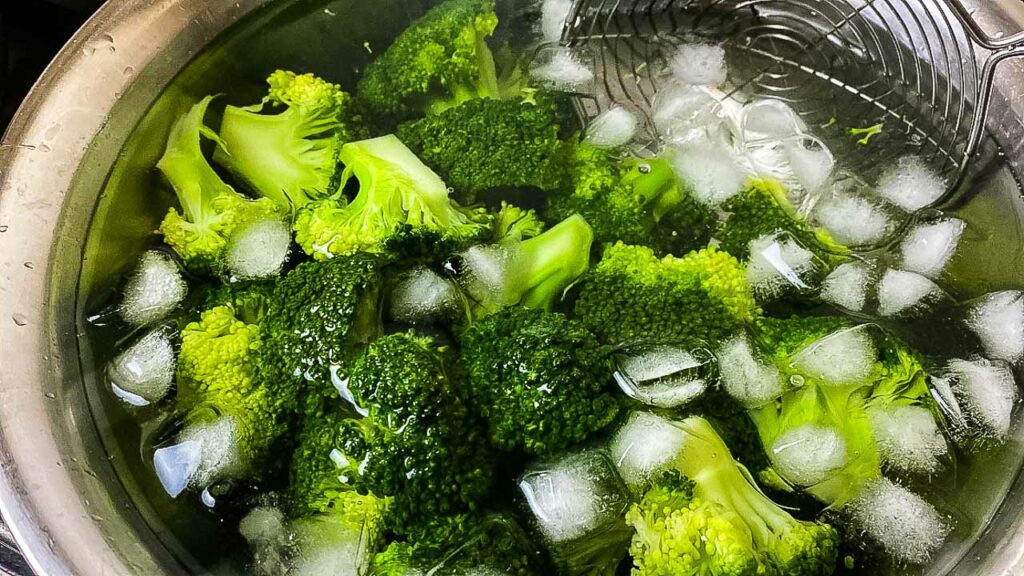
Your broccoli is now ready to be frozen.
How To Freeze And Store Broccoli?
If you try to store and freeze florets together when wet, they will stick together during the freezing process, and make a big ice lump. Following are the steps to freeze and store broccoli.
- Once the broccoli is blanched and cooled, drain it well and pat dry with paper towels to remove excess moisture.
- Arrange the broccoli in a single layer on a baking sheet and place in the freezer until the pieces are frozen solid (about 1-2 hours).
- Transfer the frozen broccoli to a freezer-safe plastic bag or container. Remove as much air as possible from the bag or container to reduce the risk of freezer burn.
- Label the bag or container with the date and contents, and place it in the freezer. The frozen broccoli will keep for up to 8 months.
So in short, rapid boiling for a short while destroys oxidizing enzymes, and the cold ice bath prevents them from cooking further. What you get is broccoli that will stay crisp and vibrant green for a longer time.
How Long Do You Blanch Fresh Broccoli?
A quick summary of the above steps for timing is as follows
Boil washed and trimmed broccoli florets and sliced stalk for 3 minutes
Drain and immerse immediately in ice-cold water for 3 minutes. (6 minutes total time)
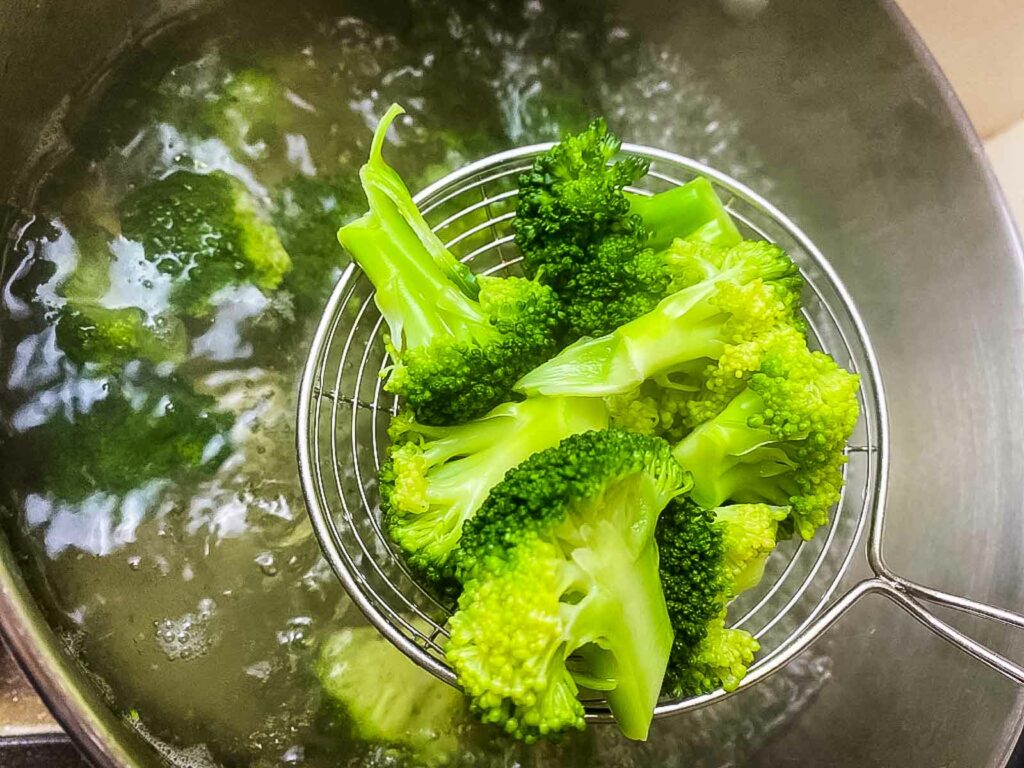
What Can I use Blanched Broccoli in?
Frozen broccoli can be used in a variety of dishes and cooking methods. Here are some common uses for frozen broccoli:
Egg, Cheese, And Broccoli Fritattas
Broccoli Fritters
Soups and stews: Add frozen broccoli directly to soups or stews for a nutritious boost.
Stir-fries: Toss frozen broccoli into stir-fries for a quick and easy side dish, like this Beef and Broccoli stir fry.
Casseroles: Use frozen broccoli in casseroles for added flavor and nutrition.
Rice dishes: Stir frozen broccoli into rice dishes for a complete meal. You can even chop it finer, and make low-carb broccoli ‘rice’.
Roasting: Roast frozen broccoli in the oven for a crispy and flavorful side dish.
Instant Pot: Add broccoli and leeks to beans or proteins to make a delicious soup.
Air Fryer: Toss some seasoning and roast in the air fryer. Toss in butter for a delicious snack.
Steaming: Steam frozen broccoli on the stovetop or in the microwave for a healthy and quick side dish.
Smoothies: Add frozen broccoli to smoothies for a nutrient-rich boost.
Note: It’s not necessary to thaw frozen broccoli before using it in these methods, as the cooking process will thaw the broccoli and cook it to the desired texture. However, if using frozen broccoli in raw dishes like salads or smoothies, you may want to thaw it slightly before using it.
HUNGRY FOR MORE?
Subscribe to my newsletter and follow along on Facebook, Pinterest and Instagram for all of the latest updates.

How To Blanch Broccoli For Freezing
Equipment
- Sauce Pan For Boiling Water
- 1 Colander For Draining Broccoli
- 1 Large Bowl for Ice Water For Quick Cooling Broccoli
Ingredients
- 1 lb Broccoli (400 g) Whole head with stalk
For Boiling
- 4 Quarts Water 1 quart = 4 cups, 4 quarts = 16 cups
- 2 Tablespoon Salt
For Quick Cooling
- 8 cups Water
- 2 cups Ice Cubes
Instructions
Prepare Ice Water Bath
- In a large bowl add ice cubes and add 8-10 cups of water
Cut Broccoli
- WIth a small knife, cut broccoli into medium-sized florets.
- The remaining stalk can be sliced thin into discs.
Boil Broccoli
- In a large saucepan, add 1 quart (4 liters / 16 cups) of water
- Add 2 tablespoons of salt and bring to a boil.
- Add broccoli florets and sliced stalk to the boiling water. Set a timer for 3 minutes.
Quick Cooling
- After 3 minutes of boiling, drain the hot water immediately with a colander.
- Immerse the broccoli in the prepared ice bath.
- Keep in water for 5 minutes, and drain the water.
- Pat dry the broccoli with a clean kitchen cloth or paper towel.
- Spread broccoli florets and stalks on a baking tray, so they are not touching each other. Freeze for a few hours.
- Broccoli is now ready to be bagged and stored away in the freezer.
Notes
- Since most of the salt water is drained off, the nutritional panel shows a lower amount of sodium than is present in 2 tablespoons of salt.
- It is important to shock the cooked broccoli in an ice bath immediately after boiling it for 3 minutes. This prevents the broccoli from cooking further, and helps preserve its texture and crunch.
Nutrition
More Content You Might Enjoy:
Popular Recipes
Disclaimer:
Our nutritional values are calculated by Spooncular API. While we try our best to ensure these values are correct, please confirm these independently.
Information given here is for general purposes only. Please check with your doctor if a particular ingredient or way of eating is suitable for you.
